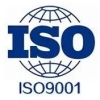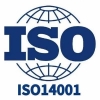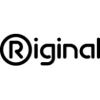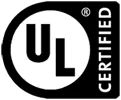PMIC design trends in the future power battery era

With the increasing global demand for clean energy, the application range of power batteries continues to expand, especially in electric vehicles, renewable energy storage and other fields. This development trend puts forward new requirements for the design of power management integrated circuits (PMIC). PMIC plays a key role in managing battery charging, discharge, and monitoring status. An in-depth understanding of future PMIC design trends will help meet the dual needs of the market and technology.
1. Pursuit of high efficiency and low power consumption
The application scenarios of power batteries generally require high efficiency and low power consumption. Future PMIC designs will require major breakthroughs in energy efficiency to ensure maximum battery life. Therefore, designers will focus on optimizing power conversion efficiency, such as improving the conversion efficiency of DC-DC converters, and reducing standby power consumption. This design trend not only helps to improve the energy efficiency of the overall system, but also helps to improve the user experience of the end device.
2. Multi-in-one integrated design
Traditional PMIC is often designed for a single function, with the growth of multi-functional demand, the future of PMIC will develop towards a highly integrated direction. By integrating multiple functional modules into a single C317C151GAG5TA7301 chip, designers can reduce PCB footprint, reduce system complexity, and improve system reliability and cost effectiveness. This all-in-one integrated design not only helps meet space and cost constraints, but also improves product performance.
3. Intelligent and adaptive ability
In future power battery applications, intelligence will become one of the important design trends. Intelligent PMIC will combine advanced algorithms and sensor data to achieve real-time monitoring and adaptive management of battery status. This adaptive capability can dynamically adjust charging and discharging strategies according to different use conditions, thereby maximizing battery life cycle and improving power performance.
4. Support for high voltage applications
As power battery systems are evolving towards higher voltages and higher energy densities, future PMIC designs need to be able to support higher voltage applications. This requires not only the improvement of the voltage resistance of the PMIC, but also the stability and reliability under high voltage conditions. In addition, developers need to focus on thermal management design to reduce heat loss and system temperature rise caused by high voltage operation.
5. Security enhancement
The power battery faces various challenges in the use of external environment and internal factors, and the safety problem is increasingly concerned. Future PMIC designs will have to have a more comprehensive safety protection mechanism, including overcharge, overdischarge, short circuit and overheating protection. By integrating multiple safety detection and protection functions, PMIC can effectively prevent battery failure and improve system stability and safety.
6. Communication and connectivity
With the popularity of smart devices and the rise of Internet of Things (IoT) applications, future PMIC designs will increasingly integrate communication functions. By adding communication interfaces such as CAN, LIN, SPI, and I2C, PMIC can exchange real-time data with other system components to improve the intelligence of energy management. Such a design not only enables remote monitoring and control, but also supports system upgradability and facilitates future function expansion.
7. Environmental protection and sustainability
On a global scale, environmental protection and sustainability have become deeply rooted concepts. For future PMIC design, the selection of environmentally friendly materials and the optimization of manufacturing processes will be one of the mainstream trends. Designers will take the ecological footprint into account when developing the PMIC, ensuring that performance is improved while environmental impact is reduced. In addition, the recyclability and reuse of PMIC will also be emphasized to achieve efficient use of resources.
8. Balance of high performance and miniaturization
At present, the trend of miniaturization of electronic products is becoming increasingly obvious. The design of future PMIC will face the challenge of further reducing the size while ensuring high performance. Through the application of new materials and innovative design architectures, designers can effectively drive the miniaturization process while maintaining or improving performance metrics. This will make it easier to integrate PMIC into compact electronic devices such as handheld devices and electric vehicles.
9. Adaptability to various application scenarios
With the wide use of power batteries in different application scenarios, PMIC design needs to have the ability to adapt to a variety of application environments. Whether in electric vehicles, energy storage systems or drones, designers need to consider the performance of PMIC under various extreme conditions. This multi-scenario adaptation capability will provide a stronger guarantee for the market competitiveness of PMIC.
10. Application of advanced manufacturing technology
In the future, PMIC designs will increasingly rely on advanced manufacturing processes, such as smaller process nodes, three-dimensional integration technologies, and more. By leveraging these technologies, designers can drive high integration and miniaturization while reducing power consumption and improving performance. The introduction of these new processes will not only affect the performance of PMIC, but may even restructure the competitive landscape of the entire power battery management market.
In the future era of power batteries, the design trend of PMIC will continue to evolve, facing the challenges of technological updates and diversified market demands. Designers need to constantly explore new materials, new technologies and new functions to adapt to the development trend of future battery technology. With the advancement of microelectronics technology and the enhancement of computing power, PMIC is expected to play a more important role in power battery systems in the future, providing strong support for sustainable energy solutions.
您可能感興趣的產品
 |
3102 | JOYSTICK 10K OHM 2 AXIS PNL MT | 7434 More on Order |
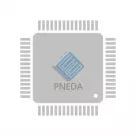 |
3991 | HEFTY ON-OFF PUSHBUTTON POWER SW | 2592 More on Order |
 |
3721 | DIGITAL TEMPERATURE AND HUMIDITY | 5958 More on Order |
 |
982 | MAXSONAR RANGEFINDER LV-EZ4 | 2574 More on Order |
 |
3785 | POE SPLITTER WITH MICROUSB PLUG | 7920 More on Order |
 |
276 | AC/DC WALL MOUNT ADAPTER 5V 10W | 6426 More on Order |
 |
588 | WIRE STARTER PK EL PNK 2.5M-8.2' | 2682 More on Order |
 |
545 | STARTER PACK EL WIRE AQUA 2.5M | 6354 More on Order |
 |
2847 | ADDRESS LED STRIP SERIAL RGBW 1M | 8388 More on Order |
 |
2573 | DOTSTAR DIGITAL LED STRIP - BLAC | 7074 More on Order |
 |
1548 | ADDRESS LED STRIP SERIAL RGB | 5598 More on Order |
 |
2540 | NEOPIXEL DIGITAL RGB LED STRIP - | 3888 More on Order |
 |
1051 | ADDRESS LED MATRIX I2C YLW-GRN | 7344 More on Order |
 |
1050 | ADDRESS LED MATRIX I2C YELLOW | 5924 More on Order |
 |
2851 | ADDRESS LED RING SERIAL RGBW | 7938 More on Order |
 |
2508 | ADDRESS LED STRIP SERIAL RGB 1M | 6624 More on Order |
 |
2552 | ADDRESS LED STRIP SERIAL RGB 1M | 5580 More on Order |
 |
2735 | ADDRESS LED MATRIX SERIAL RGB | 7182 More on Order |
 |
2759 | ADDRESS LED DISCR SER RGBW 1=10 | 17796 More on Order |
 |
4165 | FIBER OPTIC LIGHT SOURCE 1W RED | 7812 More on Order |
 |
3861 | FLEXIBLE SILICONE NEON-LIKE LED | 4896 More on Order |
 |
1933 | 7"" TFT DISPLAY 800 X 480 | 2394 More on Order |
 |
159 | DIFFUSED RGB (TRI-COLOR) LED - C | 5994 More on Order |
 |
4164 | FIBER OPTIC TUBE 5MM DIA 1M | 6120 More on Order |

